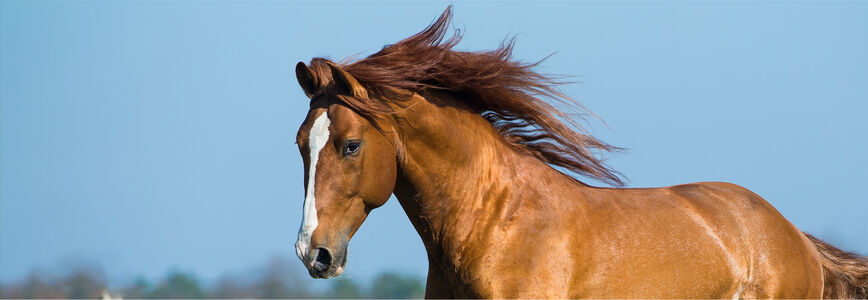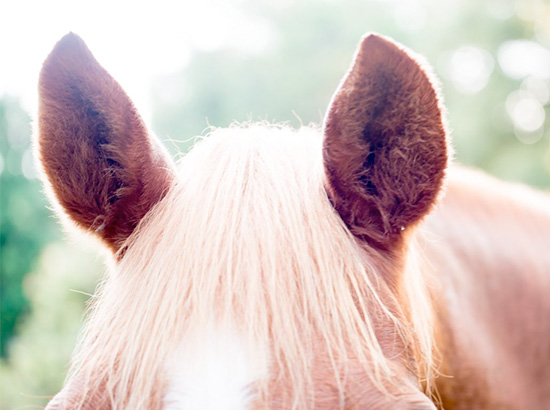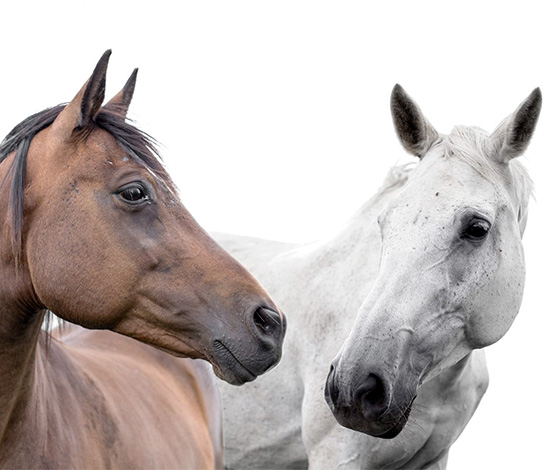
Horse ears are there to hear, but they can also tell a lot. They are used for communication between horse and human and can give important signals not only during riding.

Ears pointing backwards can also mean that the horse is focusing on sounds behind him.
Horses' ears are there to hear, but they can also say a lot. They are used for communication between horse and human and can give important signals not only during riding.
Horse ears can vary greatly in position and length depending on the breed. For example, breeds that originate from colder regions have smaller ears than other horse breeds to protect the ears from frostbite. Otherwise, a horse's ear consists of the inner ear, the middle ear and the outer ear or auricle. The outer ear is covered with fur.
Horses also hear much better than humans and have much more sensitive ears. A horse can perceive sounds up to 32,000 hertz, which is practically twice that of a human. That is why horses also hear sounds that are not even audible to us humans. They can turn each ear independently by up to 180 degrees and thus locate different sounds and their origin. These movements are made possible by no less than 16 muscles. This enables them to perceive their environment in a special way, but also to react to signals from humans at the same time. So it is no coincidence that a horse becomes more nervous in the wind. It perceives many more unusual sounds at once and cannot assign each sound separately.
You can tell a lot from a horse's ears, especially its well-being. That is why it is important to pay attention to what a horse wants to communicate with its ears.

In general, the horse must always be considered as a whole in order to understand how it feels or what it wants to "say". Every horse is individual and also sends signals with the help of the eyes or the entire body. Nevertheless, the position of the ears, for example, is a good indication of the animal's mood.
A distinction is made between several "ear positions" and their meaning:
If the ears are set forward, the horse signals attention and friendliness. If the head and neck are lowered and stretched towards another creature, this ear position means something like: "Hello, come here! I find you interesting and nice! If the neck and head are raised steeply, the horse is very alert and is weighing up whether escape might be necessary.
Ears set back do not immediately mean that the horse feels uncomfortable or afraid. On the contrary, it focuses its attention and concentration on something behind its head, which can be a rider, a carriage or any other object. The horse's ears also often point backwards during exuberant romps.
Caution is advised when a quadruped puts its ears back tightly. This signals fear, aggression, stress and pain: the more tightly the ears are laid back, the stronger the emotion behind them is and should be acknowledged as such, because it can be dangerous if not respected. Horses sometimes also put their ears close to loud noises to protect their hearing or if they are simply unsure of their character.
If the horse's ears are slightly hanging to the side, it is relaxed, perhaps even bored or just dozing. If the eyes are somewhat closed, it is important to approach the horse calmly so that it does not suddenly startle.
A stimulated play of the ears, which can move independently in different directions, shows that the horse is confused and trying to classify a situation. As it is not sure where to focus its attention, the ears are placed in all directions to orientate itself.